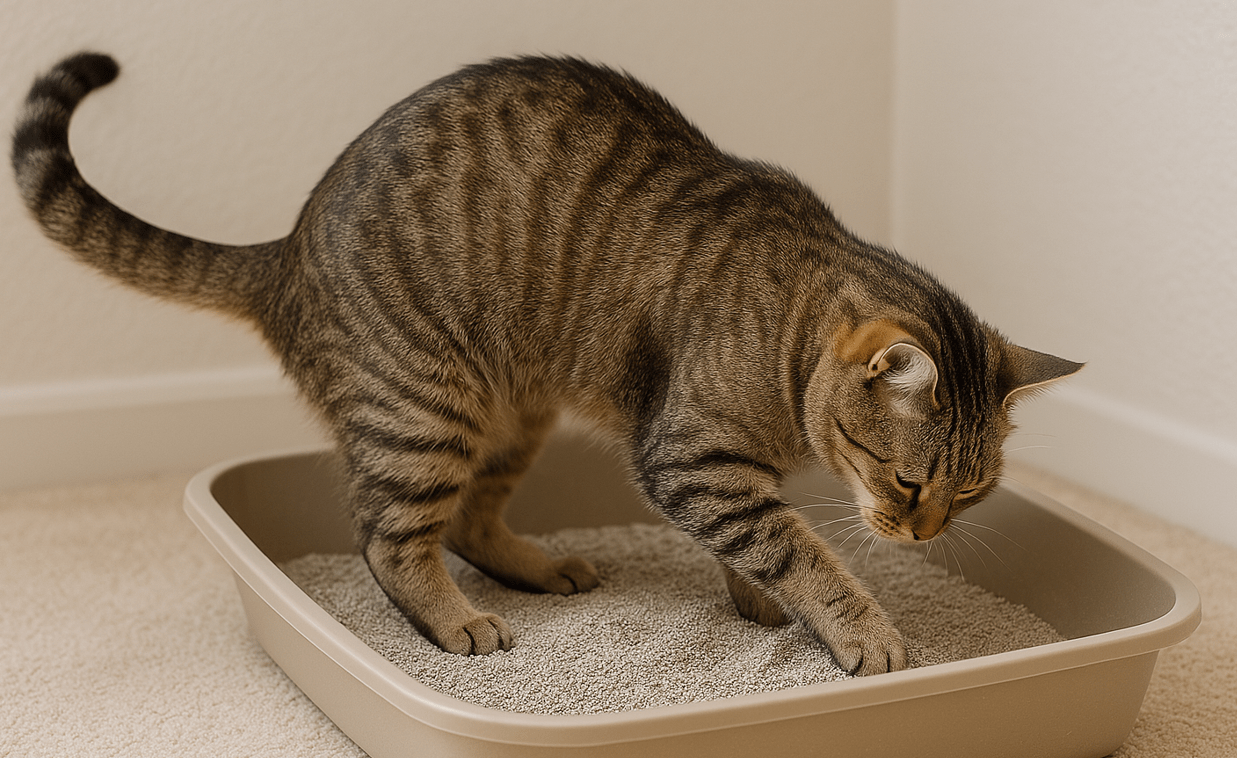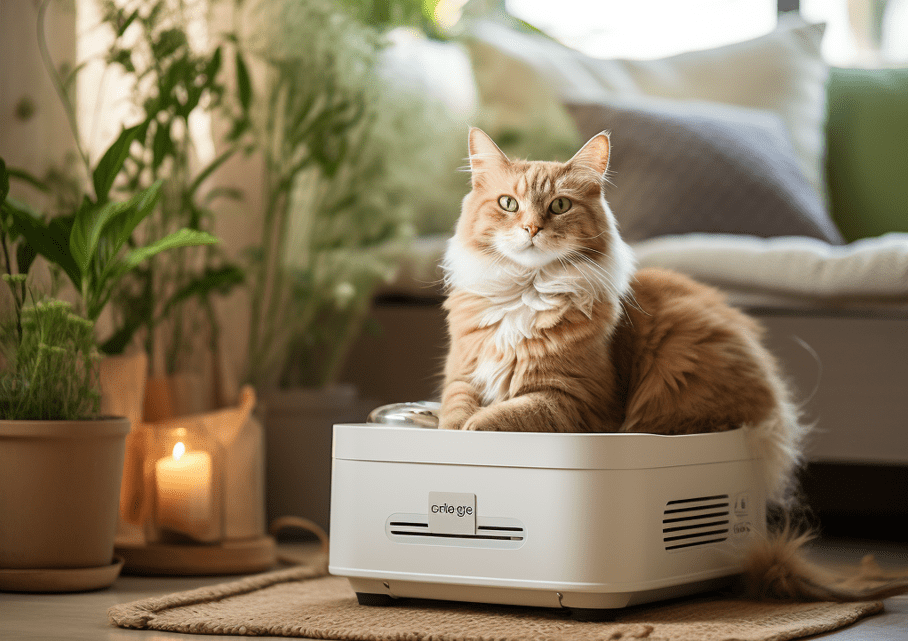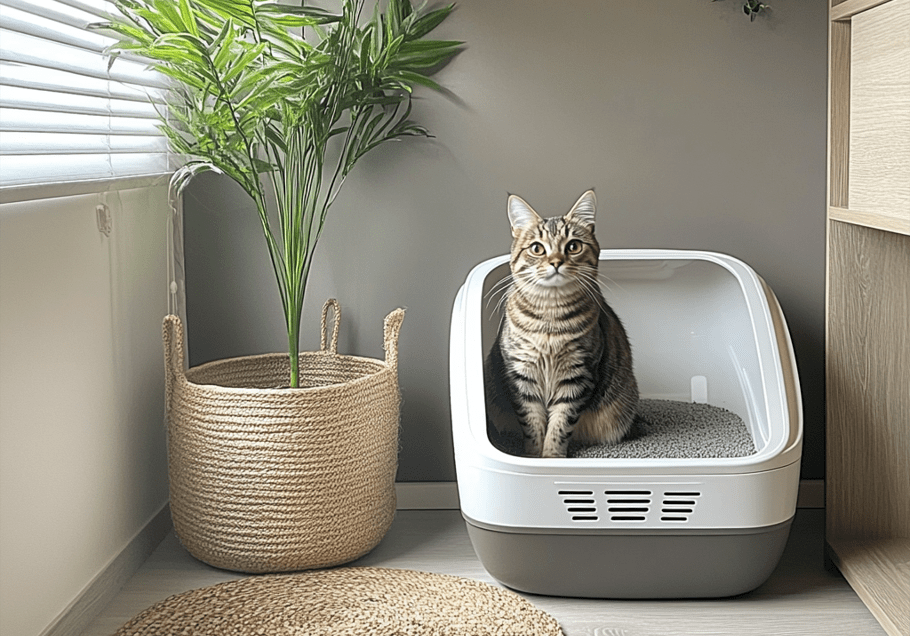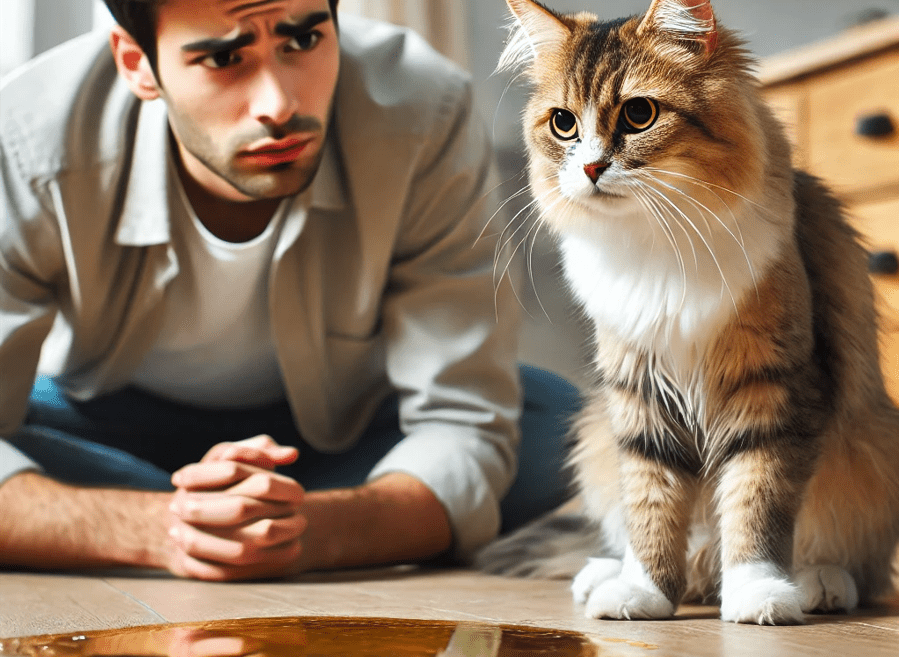
If you’re a cat owner, you’ve probably noticed a curious behavior—your feline friend meticulously buries their poop but leaves pee uncovered. This raises the question: “Why does a cat cover poop but not pee?”
Cats are mysterious creatures with deeply ingrained instincts. Their litter box habits aren’t just about cleanliness—they’re tied to survival, communication, and territorial marking. Understanding this behavior can help you better care for your pet and even detect potential health issues.
In this article, we’ll explore:
1.The evolutionary reasons behind this behavior
2.How cats use scent to communicate
3.Whether you should be concerned if your cat doesn’t cover waste
4.Tips to encourage proper litter box habits
Let’s dive into the intriguing world of feline instincts!
Why Do Cats Cover Their Poop? An Evolutionary Survival Tactic
The act of covering feces stems from deeply rooted survival instincts that domestic cats inherited from their wild ancestors. In natural environments, small wildcat species face constant threats from larger predators. The strong odor of feces can attract unwanted attention from animals that might view the cat as prey or as competition for resources. By burying their waste, cats effectively mask their presence, reducing the risk of detection by predators or rival felines.
This behavior also plays a role in social dynamics among cats. In feral cat colonies, a strict hierarchy exists where dominant cats often leave their feces uncovered as a way to assert their status and mark territory. Submissive cats, on the other hand, will bury their waste to avoid provoking confrontations with more assertive members of the group. This instinct persists in domestic cats, even though they no longer face the same survival pressures.
Additionally, the behavior is learned during early development. Kittens begin observing their mother’s litter box habits between four to six weeks of age, mimicking her actions as part of their natural learning process. Orphaned kittens or those separated from their mother too early may not develop proper burying behaviors unless humans intervene with patient training.
While many owners assume their cats bury waste purely for cleanliness, the reality is more complex. In the wild, leaving feces exposed could contaminate food sources or resting areas, creating health risks. Domestic cats retain this instinct even though their environment no longer presents these dangers, demonstrating how deeply ingrained these behaviors remain.
Why Don’t Cats Cover Their Pee? The Science of Scent Marking
Unlike feces, urine serves a completely different purpose in feline communication. Cats possess scent glands in various parts of their bodies, but urine contains particularly potent chemical markers called pheromones that convey detailed information to other cats. These pheromones can indicate a cat’s reproductive status, health, and even emotional state, making urine an essential tool for territory marking and social signaling.
Male cats, especially those that are unneutered, frequently engage in spraying behavior where they deposit small amounts of urine on vertical surfaces. This act isn’t about elimination but rather a deliberate form of communication, announcing their presence to potential mates or rivals. Female cats also use urine marking, though typically in less conspicuous ways, such as leaving small puddles uncovered in strategic locations.
The difference in how cats treat poop versus pee comes down to the type of information each conveys. Feces primarily contains waste products from digestion, offering little communicative value beyond basic scent masking. Urine, however, carries a wealth of data that other cats can interpret, making it counterproductive to bury. By leaving urine exposed, a cat effectively posts a “message” for others to read, whether declaring territory or signaling availability for mating.
In multi-cat households, this behavior becomes even more pronounced as cats compete for dominance or establish boundaries. A cat that feels secure in its environment may not feel the need to mark as frequently, while stressed or anxious cats might overmark to assert control. Understanding these nuances helps owners interpret their pet’s actions and address any underlying issues, such as territorial disputes or environmental stressors.
Should You Be Concerned If Your Cat Doesn’t Cover Waste?
While the general tendency to cover poop but leave pee uncovered is normal, sudden changes in this behavior can indicate underlying problems. For instance, a cat that abruptly stops burying feces might be experiencing joint pain, making the physical act of scratching litter uncomfortable. Arthritis, common in older cats, can lead to this shift, signaling a need for veterinary evaluation and potential adjustments like shallower litter boxes or softer litter.
Similarly, a cat that starts leaving urine uncovered when it previously buried both waste types could be dealing with stress or anxiety. Changes in the household, such as new pets, moving furniture, or even altered routines, can disrupt a cat’s sense of security, prompting marking behaviors. In such cases, providing additional litter boxes, creating quiet retreats, or using pheromone diffusers may help restore equilibrium.
More concerning is when a cat avoids the litter box altogether, as this often points to medical issues like urinary tract infections, bladder stones, or kidney disease. These conditions cause pain during elimination, leading the cat to associate the litter box with discomfort. Any sudden aversion to the box warrants immediate veterinary attention to rule out serious health problems.
Monitoring your cat’s habits provides valuable clues about their well-being. Consistent behavior, even if it involves leaving pee uncovered, is typically harmless. However, deviations from the norm, especially when accompanied by other symptoms like straining, vocalizing during elimination, or blood in urine, should never be ignored. Early intervention can prevent minor issues from escalating into major health crises.
How to Encourage Proper Litter Box Habits
Creating an environment that supports your cat’s natural instincts can promote consistent litter box use. Start by selecting the right type of litter. Most cats prefer fine-grained, unscented clumping litter, which feels soft under their paws and makes burying easier. Avoid heavily perfumed products, as strong odors can deter sensitive cats from using the box.
Maintaining cleanliness is equally crucial. Cats are fastidious creatures and may refuse to use a dirty litter box. Scoop waste daily and completely change the litter at least once a week. For households with multiple cats, increasing the number of litter boxes can prevent competition and reduce stress. The general recommendation is one box per cat plus an extra, placed in quiet, low-traffic areas where the cat feels safe.
Observing your cat’s preferences can also guide adjustments. Some cats prefer covered boxes for privacy, while others find them confining and opt for open ones. Experimenting with different styles can reveal what your cat finds most comfortable. Additionally, ensuring the box is large enough for the cat to turn around and dig comfortably encourages natural burying behaviors.
For cats that resist covering waste, gentle reinforcement can help. After your cat uses the box, you can demonstrate scratching the litter yourself. While this may seem odd, cats often learn by imitation, and seeing you engage in the behavior might prompt them to follow suit. Positive reinforcement, like treats or praise immediately after they cover their waste, can also reinforce the habit.
Addressing environmental stressors plays a significant role as well. If your cat feels threatened by other pets or unsettled by changes in the home, they may mark more frequently. Providing vertical spaces like cat trees, hiding spots, and separate feeding areas can reduce tension. In multi-cat households, ensuring each cat has access to resources without competition can minimize conflict and promote harmonious litter box use.
Final Thoughts
So, why does a cat cover poop but not pee? The answer lies in their wild ancestry and communication methods. While burying poop helps them stay hidden, leaving pee uncovered allows them to mark territory.
By understanding these instincts, you can better cater to your cat’s needs and spot potential health issues early. If your cat suddenly stops covering waste, monitor their behavior and consult a vet if needed.




